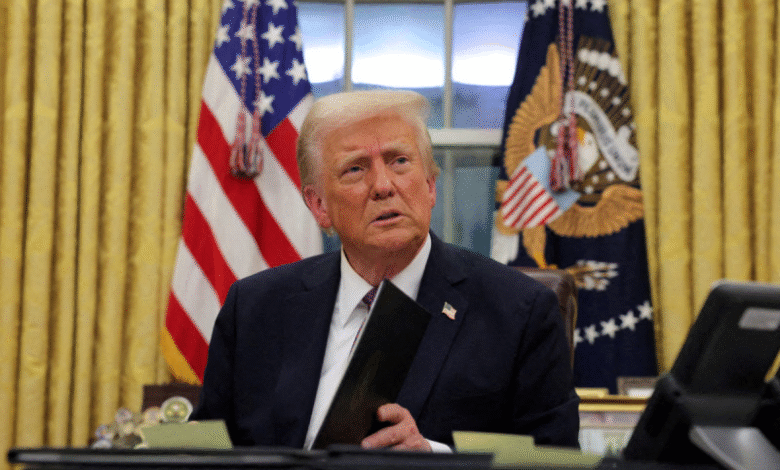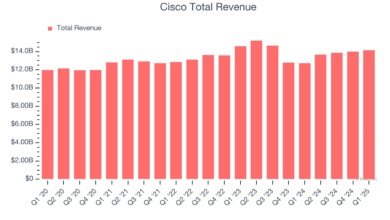Trump Tariffs Deadline: Flexibility or Firmness Before July?

As tensions rise over international trade policies, the looming Trump tariffs deadline is drawing attention from businesses and economists alike. Set for July 9, this critical juncture could see the reinstatement of high tariff rates impacting numerous countries, particularly affecting EU imports tariffs. President Donald Trump recently expressed his disregard for the deadline, stating, “We can do whatever we want,” hinting at a possible extension or alteration of the timeline. This is pivotal as American businesses navigate a landscape transformed by Trump trade agreements, which have drastically reshaped U.S. trade policy under his administration. With just days remaining, there is considerable uncertainty about how the tariff rates for 2025 will unfold, potentially stirring further volatility in the global marketplace.
As the clock ticks down to the imminent July tariff deadline, individuals vested in U.S. trade dynamics are closely monitoring developments. With significant implications for cross-border commerce, the prospect of reinstated tariffs raises questions about the stability of existing trade relationships. President Trump’s flexible stance on these timelines indicates a broader strategy regarding international economic negotiations. This forthcoming shift in tariff rates could deeply affect trade agreements previously set and outline new rules for imports, particularly from Europe. As discussions unfold, stakeholders are left weighing the potential impacts these changes may have on the broader economic landscape.
Understanding Trump’s Tariff Policies and Their Implications
President Trump’s approach to tariffs has significantly impacted U.S. trade policy. His administration’s strategy, particularly regarding the reinstatement of tariffs, showcases a fluctuating method of engagement with U.S. trading partners. With the July 9 tariff deadline looming, Trump has indicated a willingness to deviate from this date, stating, ‘We can do whatever we want.’ This statement reflects a broader trend within his administration where deadlines are often viewed as negotiable rather than fixed, contributing to market uncertainty as businesses anticipate potential changes in tariff rates.
As the U.S. prepares to engage with the European Union over trade, the stakes remain high due to proposed tariff rates of 50% on EU imports if a deal isn’t reached. The implications of these tariffs transcend mere financial statistics; they affect global supply chains, market volatility, and economic relationships. The combination of Trump’s tariffs and his outspoken remarks can easily unsettle foreign markets, resulting in feelings of unpredictability concerning U.S. trade agreements. This pattern resonates with many nations still reeling from the consequences of prior tariff implementations on goods, which were abruptly increased without prior warning.
Frequently Asked Questions
What is the significance of the Trump tariffs deadline on July 9, 2025?
The Trump tariffs deadline on July 9, 2025, is crucial as it marks the date by which the U.S. and the European Union must negotiate a trade deal, failing which a 50% tariff rate will be imposed on EU imports. This deadline is part of President Trump’s broader trade policy aimed at balancing trade deficits and enforcing ‘reciprocal tariffs’ on several countries.
Will the Trump tariffs deadline be strictly followed by the administration?
President Trump has indicated flexibility regarding the July tariffs deadline, stating, ‘We can do whatever we want.’ This suggests that the administration may either extend or shorten the deadline depending on ongoing trade negotiations and assessments of various countries’ responses to the tariff rates.
How do Trump’s tariffs impact U.S. trade policy with European countries?
Trump’s tariffs, particularly those linked to the July 9 deadline, significantly influence U.S. trade policy with European countries by introducing potentially high tariffs on imports. The administration’s approach aims to renegotiate existing trade agreements and address trade imbalances, which are central to Trump’s broader trade strategy.
What happens after the Trump tariffs deadline of July 9 if no agreement is reached?
If no trade agreement is reached by the Trump tariffs deadline of July 9, 2025, the U.S. is expected to impose a 50% tariff on EU imports. This would escalate trade tensions and could lead to retaliatory measures from the EU, affecting various sectors of both economies.
How might Trump’s tariff rates change after the July 8 deadline?
After the July 8 deadline, many of Trump’s previously reduced country-specific tariff rates may revert to their original higher levels unless formally amended. This could significantly impact international trade relationships and economic conditions for importing countries.
Are there any ongoing trade negotiations related to the Trump tariffs deadline?
Yes, there are ongoing negotiations related to the Trump tariffs deadline, particularly between the U.S. and several trading partners. As mentioned, the White House has only made limited agreements with China and the UK, which emphasizes the urgency of reaching a broader deal before the deadline.
What are the potential repercussions of the July 9 Trump tariffs deadline?
The potential repercussions of the July 9 Trump tariffs deadline could include increased costs for consumers on imported goods, disruptions in international trade relationships, and heightened market volatility. A return to high tariff rates may mirror the economic upheaval experienced when the initial tariffs were announced.
What earlier decisions led to the July 9 Trump tariffs deadline?
The July 9 Trump tariffs deadline stems from earlier decisions made during the ‘temporary reprieve’ period initiated by Trump’s executive order on April 9, which aimed to reduce tariffs to a uniform rate for a limited time, intended to facilitate negotiations and avoid immediate economic strain.
| Key Point | Details |
|---|---|
| Trump’s Stance on Tariffs | Trump indicated flexibility regarding the July tariffs deadlines, stating, “We can do whatever we want.” He suggested potential changes to the deadline. |
| Upcoming Tariff Deadline | The July 9 deadline is crucial for a trade deal with the EU, or else a 50% tariff will be imposed on EU imports. |
| Impact of Trump’s Tariff Order | The executive order signed in April establishes a temporary tariff reprieve for 90 days, set to expire, which will revert rates to much higher levels unless amended. |
| Negotiations Outcomes | So far, only limited trade agreements have been made with China and the UK, characterized more as frameworks than finalized agreements. |
| Global Economic Concerns | The reinstatement of tariffs could lead to economic upheaval similar to that caused by Trump’s initial tariff announcements in April, which resulted in significant market volatility. |
Summary
The Trump tariffs deadline has sparked much discussion regarding its flexibility and potential ramifications. As President Trump stated, “We can do whatever we want,” implying that the impending July tariffs may be altered. The economic landscape remains uncertain; with only limited agreements reached so far, the potential for high tariffs on imports poses risks of disruption, reminiscent of previous market reactions. Businesses and trading partners are in a state of alert, awaiting clearer guidance on the outcomes of these critical negotiations.



